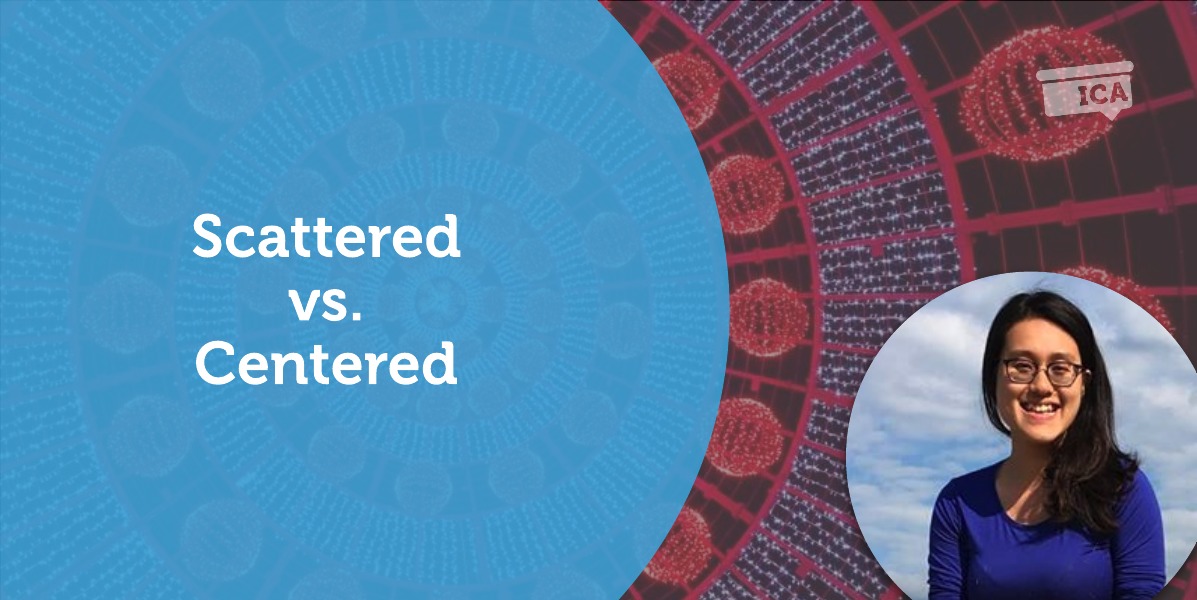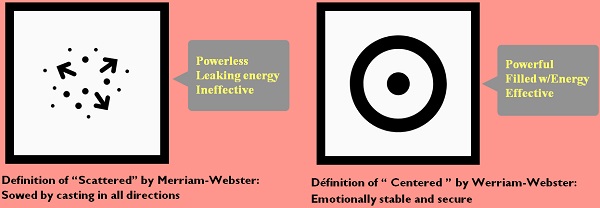A Coaching Power Tool Created by Yun Ju Ruby
(Life Coach, TAIWAN)
The Process From Instability To Stability
Every human being contains the source of life within them. People are naturally resourceful and powerful. Many who experience scattered thoughts or emotions know the feeling of scarcity and powerlessness. Often when we are disconnected from our cores, we experience chaos and discomfort due to lack of alignments in our beliefs and actions. Reacting from a place of powerlessness often leads us to more chaos and less power, and by recognizing the situation and shifting it consciously, one can reconnect with their core and become centred. While being centred, their actions and beliefs can stay in alignment easily and their actions can bring effective results and lead them eventually into satisfaction and fulfilment.
|
Definition of “Scattered” by Merriam-Webster: Sowed by casting in all directions Example: Emmy realized her flight to an annual board meeting was cancelled due to an outburst of protest five days before her departure. With her thoughts and emotions scattered everywhere, she tried, just like hundreds of other people, to call the customer service line to file an official complain. Her attempt was in vain due to the traffic over the phone and she was left angry, frustrated and without a ticket. Her anxiety peaked and it caused her sleep. She couldn’t think clearly and her physical, emotional and even mental health are affected negatively. The emotions often experienced here: overwhelmed, stressed, anxious, including feeling tired etc. When being in a scattered state, one might feel like a phone with an expired battery within, never fully charged with energy/power leaking constantly let along functioning properly. All it takes is a new battery— a new state of condition. |
Definition of “ Centered ” by Merriam-Webster: Emotionally stable Example: Emmy realized her flight to an annual board meeting was cancelled due to an outburst of protest five days before her departure. With her thoughts and emotions secure and stable, she immediately informed her boss and her direct team members to notified them of the situation. Two options were birthed accordingly:
Emmy prepares for an online presentation while waiting for the result in peace. The emotions often experienced in this state: Calm, peaceful, bliss with sufficient energy to deal with what is an infant of them etc. |
How to apply it to the coaching process:
Step 1— Check where the client is on the centeredness scale ( 1-10, 1 being 0% centeredness, 10 being fully centred. ) ex. Fully centred may look like: feeling empowered, effective and productive. The client can decide where they are according to themselves.
Step 2— Decide where he/she want to be, either within the whole coaching journey together or within that particular session.
Step 3 — Clarify what he/she needs then let the journey begins.
Once the coaching journey starts, this power tool can be invited back for necessary support when the clients get stuck. A sign of powerlessness throughout the coaching journey could be a good indication of the clients’ need to get centred again.
Practical ways to help the clients gain centeredness:
* Since centeredness is usually a result of connecting with oneself, the following suggestions aim at bringing back such connection.
Mental approach— using the mind to visualize a place which brings the client joy. Invite them to be there and feel it deeply then describe what elements there are that make them happy. Ex. The ocean, the family dinner, walking through the forest, finishing up a book etc. As they do such a visualization, they are connecting with themselves with past blissful experiences that nourished them.
* Mental approach can be a good way to figure out practical actions to take in order to re-centre oneself when needed.
Somatic approach— using the physical connection with oneself to bring centring effects and healing. Our hands contain soothing power and often we seek such affections/connection more externally. When placing our own hands over our body, such the stomach, the heart or even over our core( where the sexual organs are ) with intentions and love, the physical stimulus can bring one tremendous benefits.
The somatic approach is especially useful when one is stuck in the head and having overwhelming thoughts that can’t seem to quiet down.
The combination of both can also bring positive results when used well.
Reflections for when the shifts occurred:
As coaches, we want our clients to gain awareness in life, not just within our sessions together, and by blending easy reflections into the sessions, we are building their self-awareness muscles for the future.
When shifts take place, usually it is the best moment to reflect; the awareness created within the reflections can be food for thoughts and positive reminders when needed.
- What was it like before?
- What is it like now?
- What changed?
- What to bring forward with?

